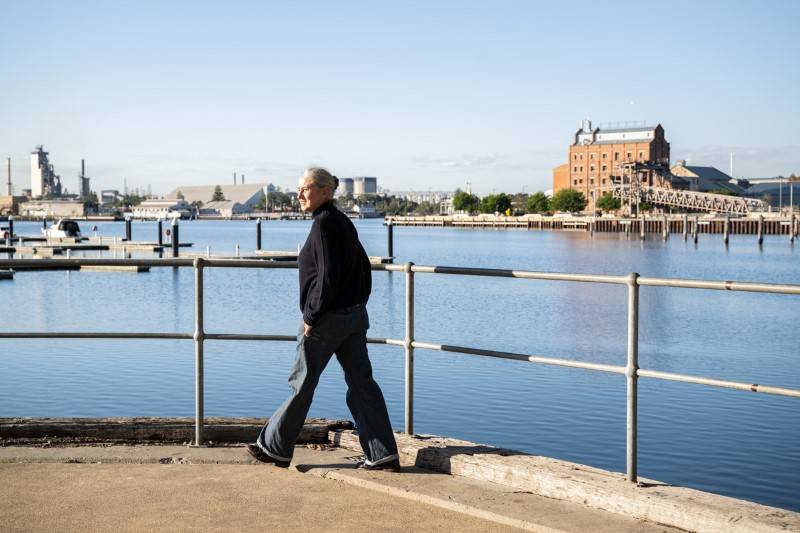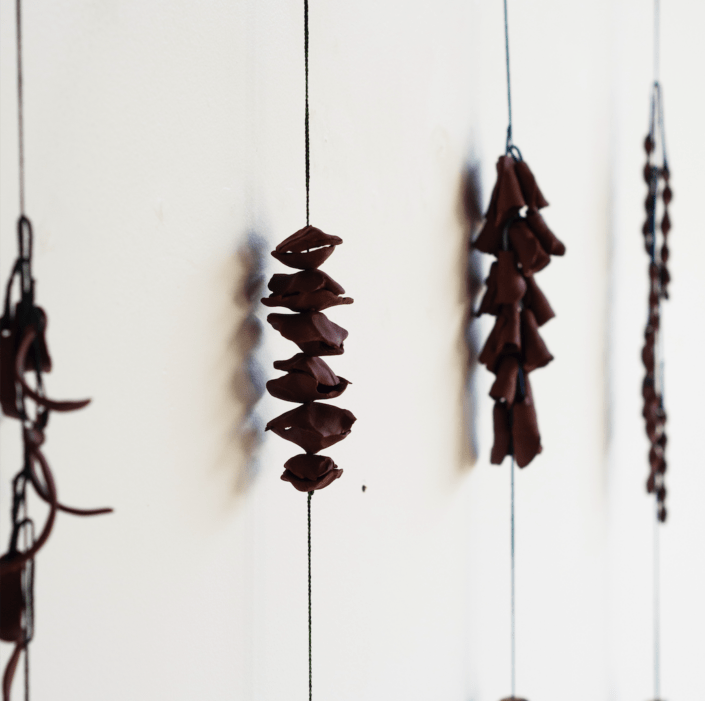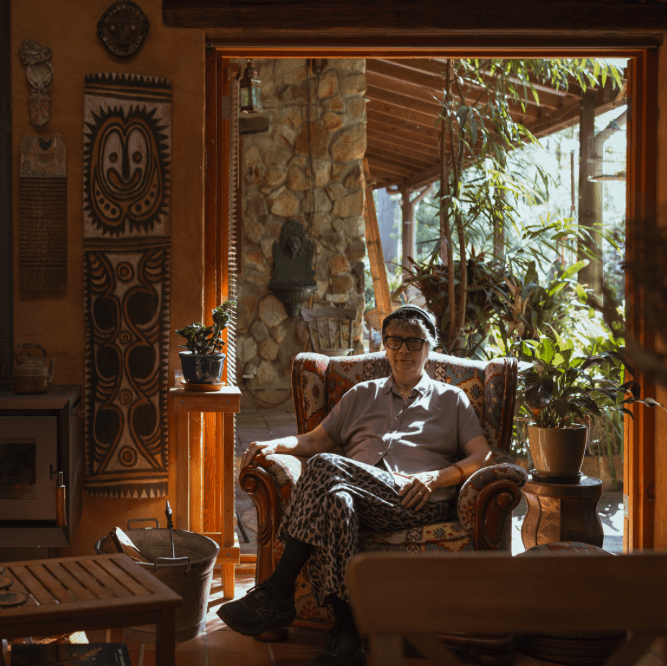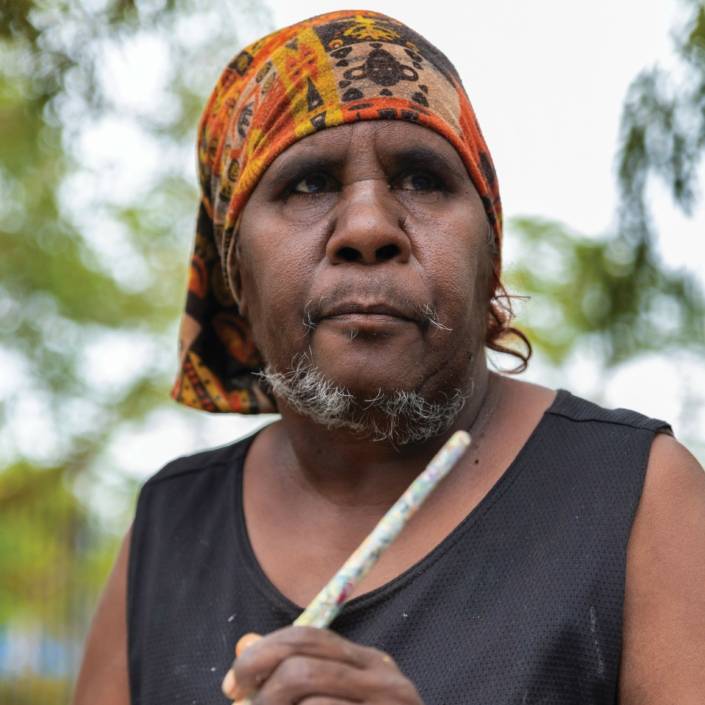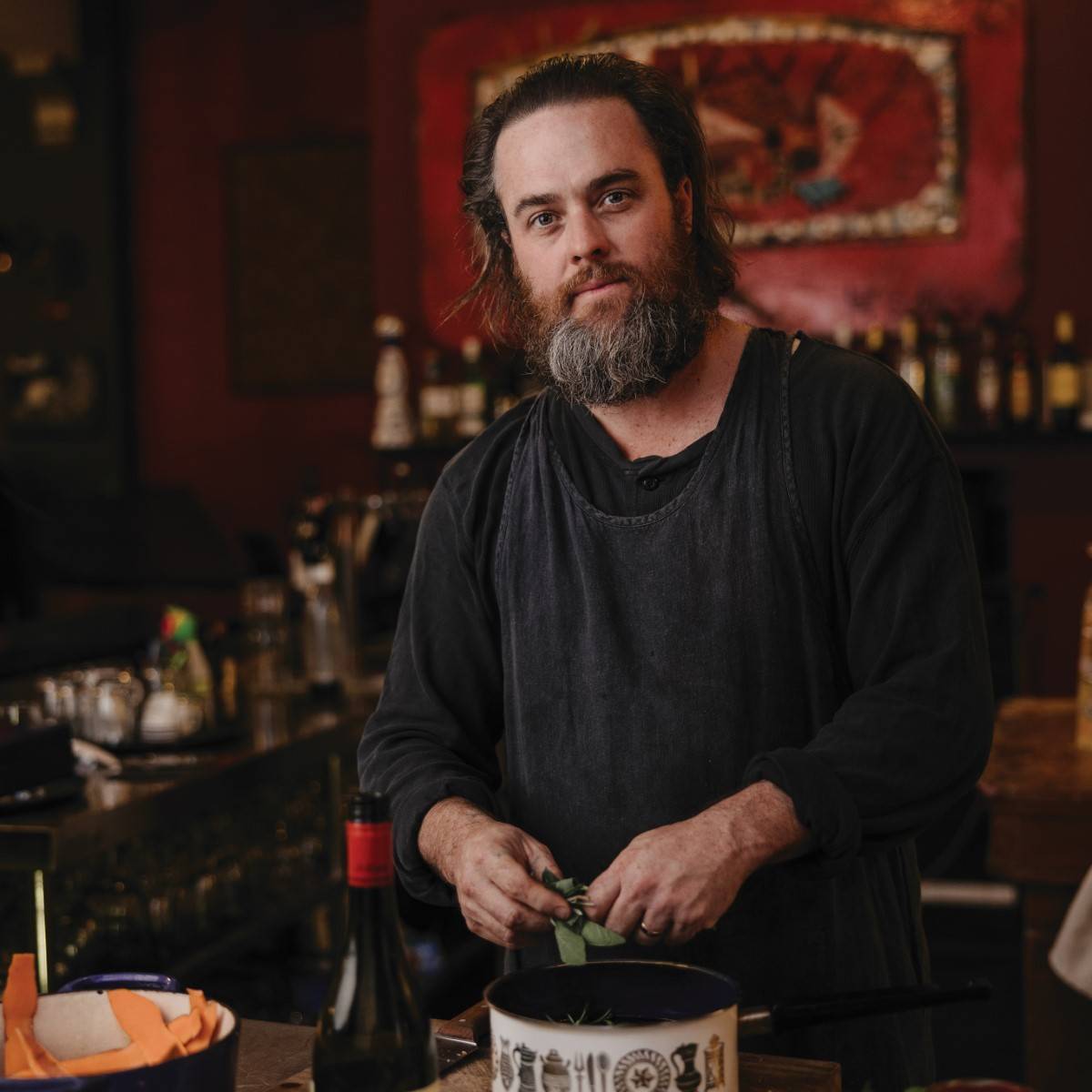Kirsten Coelho: Everyday Perfection
For the first time in her three-decade long ceramic practice, Kirsten Coelho explores the possibilities of terracotta.
Words: Joanna Kitto
Photography: Morgan Sette
There are two 17th century still life paintings Kirsten Coelho has been returning to. The Adelaide-based ceramicist draws on art history, and in particular the history of ceramics, in all her work and keeps visual reference points close by in the studio. Recently, she has been drawn to the softly lit vessels on dining tables of Still Life with Porcelain and Sweets by Juan van der Hamen y León (c.1627) and Still Life with Four Vessels by Francisco de Zurbarán (c.1650). In these paintings, light brings everything to life. Van der Hamen and Zurbarán capture moments in time where the light hits just so, and four centuries later, their quiet domestic scenes continue to hold attention.
Coelho’s most recent body of work takes its cue from still life paintings to capture the pleasures of the domestic space. Coelho gives the work the title hauslieder, after songs composed by Franz Schubert for one voice and piano to be sung in the home (the direct translation being song for the home). Pairs and groups of vessels nestled on shelves form vignettes that capture the warmth and peacefulness found in environments of our own making. Larger works of similar familiarity sit atop a long plinth. These are forms Coelho often returns to in her practice, ginger jars, pots, vases and jugs, deftly brought to life for us to see their details anew. For Coelho, this focus on points of reverie is where still life painting and ceramics share a common ability to frame, re-evaluate and elevate a simple form.
Best known for her use of soft white porcelain to create serene ceramic objects, with hauslieder, Coelho introduces terracotta for the first time in her three-decades long practice. Porcelain, a vitrified pottery, with a white, fine-grained body that can be translucent, is considered of high standing among clays, and its fragility and ability to form delicate curves offers the material a sense of perfection.
Terracotta, on the other hand, is a robust earthenware that is ochre in colour, porous, opaque, and considered a more common material for making vessels of everyday use. Coelho is interested in the visual and historical interplay between the two, and, inspired by Zurbarán’s elegant treatment of a terracotta vase, the way that ornate features can elevate terracotta and disrupt our understanding of the hierarchy of matter.
Coelho’s investigations into the histories of ceramics (with British, Greek and Chinese heritages) are grounded within the narrative of her own life in South Australia, her home since migrating from Denmark via North America in 1972. For Coelho, terracotta is a reminder of the stories of domestic objects in Australia, and, more personal still, she recalls visiting Bennetts Magill Pottery, as a child growing up in the Eastern suburbs of Adelaide with an early interest in the possibilities of clay.
Coelho works with ceramics, but form, space and light are all her mediums. She seeks to pin down – and suspend – elusive moments of joy experienced in our engagement with material pleasures. Coelho speaks of quiet moments at home, watching the light move through a window and bathe the room in a golden glow. She describes the sense of magic in the way that light can illuminate objects and transform them momentarily, before shifting again. It is this metaphysical connection to what surrounds us that Coelho is compelled to capture, and hold, in both the process and the outcome of her work. The pinning down of something we may not know exists, until it does. A phenomenon that is clumsily framed in language, but beautifully realised in matter.
ERICA GREEN
Director, Anne & Gordon Samstag Museum of Art
“Love is undoubtedly found in the brilliant porcelain vessels of Kirsten Coelho, who draws on a deep well of nostalgia for the everyday utensils of Australia’s pioneering past; their elegant, restrained forms and tantalising edges of minimal colour are richly informed by a stream of other cultures.
In 2008 the Samstag Museum of Art commissioned South Australian School of Art graduate Coelho to create a site-specific installation for the University of South Australia’s new Hawke Building, designed by John Wardle and including the Samstag Museum of Art.
The commissioned work features nine ceramic vessels made of porcelain and high-fired with a matt white glaze and banded iron oxide. The pieces are grouped in the cabinet to create a sense of space around the objects and to allow for a linear reading of the objects. Later, as Curator of the Art Gallery of South Australia’s 2018 Adelaide Biennial of Art, I invited Kirsten to create an ambitious new work, the resulting work titled Transfigured Night featured 73 vessels presented in an eerie half-light running the length of the JamFactory Gallery.”
JOANNA STRUMPF
Director, Sullivan+Strumpf, Sydney and Melbourne
“Kirsten is a master of her artistry; her ceramics have an ethereal quality to them, verging on other-worldly perfection. Her devotion to contemporary ceramic art is matched by her deep understanding of its history, a duality that appeals to me greatly. The works have an air of both humility and confidence to them, together honed through the artist’s sensitivity to form and to the material quality of porcelain.
Most recently, Kirsten has had two solo exhibitions at university museums: The Return, at UNSW Galleries, 2021, and a major installation, Ithaca, at the University of South Australia’s Samstag Museum of Art, 2020.
Outside of Australia, Kirsten has a large following amongst Singaporean collectors and exhibits regularly with her London dealer Adrian Sassoon at prestigious European fairs such as TEFAF Maastricht.
Her forthcoming exhibition will focus on smaller groupings of works, and the prices are reflective of this scale.
Kirsten’s work resonates with particularly refined collectors who tend to collect her work in depth. It is not uncommon for collectors to buy a work from every show, or to fly around the world to see her work exhibited.
There is a sense of stillness and repose to Kirsten’s work. It resonates with collectors who like their works to invite contemplation.”
This article was originally published in Art Collector issue 105, July-September 2023.

